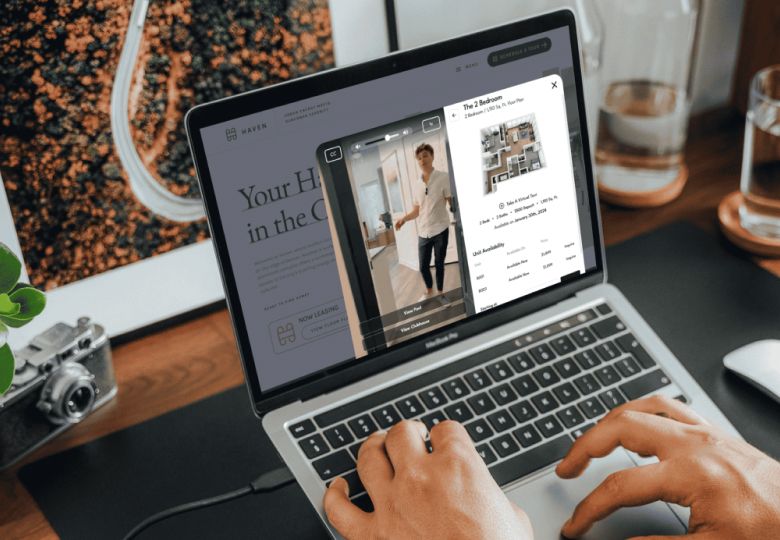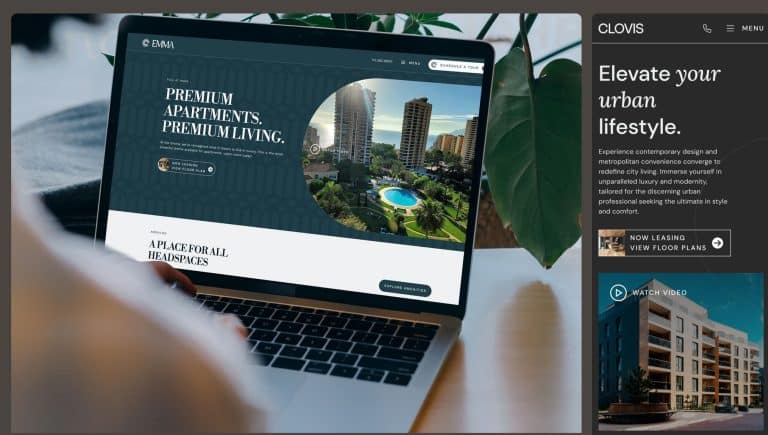Leasing Agent Tips: 9 Ways to Maximize Your Close Rate
Here are nine things you can do to get more tenants in your units and keep occupancy rates as high as possible

As a property manager or leasing agent, one of your main responsibilities is to keep occupancy rates high.
And the more apartment units you manage, the harder that can be.
Leasing agents use all sorts of closing techniques to seal the deal with new renters. But no matter how successful you may be, there are always new tips and tricks to learn.
Look no further!
From pre-qualifying tenants to knowing how to follow up after an apartment tour, here are nine proven leasing agent tips to help you maximize your close rate.
What is the Closing Ratio for a Leasing Agent?
If you’re in the business of apartment leasing, you’re likely familiar with the terms “closing ratio” and “close rate.” Both refer to the number of leads you start with compared to the number of new tenants you can find to sign leases.
What is a Good Closing Rate for a Leasing Agent?
There is no specific number that defines a good close rate, but the goal is to have the highest close rate possible.
Some property owners and leasing agents may be happy with a 20% close rate, meaning that for every ten tenants you take on a tour, two sign a lease. Other leasing agents may strive to hit a 30% or 40% rate.
The higher the number, the better use you’re making of your time.
Your property management company or property owner may have a specific standard for how many deals they expect you to close. Or, they may not have a target close rate at all.
Property management companies often want their leasing agents to increase their close rates. That way, they have more time to devote to other tasks.
Ready to get your close rate higher?
Here are nine things you can do to get more tenants in your units and keep occupancy rates as high as possible:
1. Create a Strategy and a Plan
The first step in maximizing your close rate is to create an effective apartment marketing plan that draws tenants in. Social media platforms and sites like Apartments.com can attract an endless amount of interest in your complex. And when they do, you’ll need to have a strategy for how to handle the next steps.
As an apartment manager, you must establish a plan and create a roadmap for all leasing processes.
It helps to have a set strategy on how to:
- Gather leads
- Vet tenants
- Give tours
- Conduct the entire leasing process
With expertise in these areas, you can increase productivity and improve time management.
Make a checklist that you can follow every time you begin a search for a new tenant. Be sure to include everything you need to do at every stage of the process, including following up to close the deal.
If you own an apartment complex or have several property managers under your supervision, it helps to spend time on a training manual. This manual should contain a detailed breakdown of the leasing roadmap, including the steps that agents can take to close deals.
See also: Your Step-by-Step Guide to Creating an Effective Apartment Marketing Plan.
2. Pre-Qualify Potential Tenants
All successful leasing agents have one thing in common:
They understand the importance of tenant retention.
And the best way to increase tenant retention rates is to know how to find the right tenants in the first place.
Showing apartments and conducting building tours takes time. So pre-qualifying tenants is key to maximizing your time, increasing your closing rates, and retaining tenants for longer lease terms.
Understand what your tenants are looking for.
And know what their budget is.
There’s no point in showing a $2,000 per month apartment to someone who can only afford to spend $1,000. There’s no reason to show an apartment that isn’t pet-friendly to a tenant who has already told you they have a dog.
Not all apartment buildings are right for all tenants. It makes no sense to show a unit to every single potential renter that shows interest. Instead, make better use of your time by showing it to people who fit the criteria and who are looking for what you have to offer.
Learn how to guarantee lease renewals a year from now. Read 13 Unique Ways to Boost Your Resident Retention.
3. Prepare for the Tour

Most tenants shop around and tour various apartment communities before deciding which unit they want to lease. That means you have to make a great impression when showing prospective tenants around your property.
Before taking a tenant on an apartment tour:
- Be sure that the unit is in excellent condition
- Guarantee it’s clean from top to bottom.
- Check that all appliances, lights, windows, faucets, and fixtures are in working order.
- Ensure it smells good.
The goal is to make a renter want to sign a lease immediately!
All outside areas and common areas should also be well-maintained for beautiful curb appeal. This rule isn’t for the sake of showing the apartment to new tenants.
You have an obligation to keep these areas in tip-top shape for your current tenants as well.
4. Conduct the Tour Like a Pro
If you want to close more leases, be professional and respectful throughout every moment of your apartment tour.
Be hospitable by opening the door and ushering the prospective tenant in. Point out the highlights and best features of the apartment. Encourage visitors to open cabinet and closet doors. Make them feel comfortable and allow them to do a thorough inspection of the unit, inside and out.
Know the square footage of the apartment. Carry a tape measure and be willing to do some on-the-spot measuring if the future tenant worries that their couch, bed, or dining table might not fit.
Don’t Forget to Mention the Area’s Perks!
Any leasing agent can prove their knowledge about a vacant unit.
But the best leasing agents provide their clients with information about the surrounding area as well.
Tell clients about nearby shops and restaurants. Let them know the proximity to the nearest train station or airport. Inform them of nearby parks, schools, dry cleaners, and gyms.
It’s just as important to sell tenants on the neighborhood as the apartment itself.
After the tour, give the client your business card, a brochure, or a copy of the floorplan for reference. If you include actual photos in the pamphlet, even better!
5. Ask Questions
Leasing agents should always be ready and willing to answer questions from potential renters.
But asking questions can be a huge benefit as well.
The better you know the tenant and their needs, the easier it’ll be to get them into an appropriate unit.
For example, say you have a client that works from home touring a one-bedroom unit. You may want to steer them into a two-bedroom unit to have their own home office.
If you lease units in several apartment complexes, ask them if they’d be willing to take a tour of a different building. Suggest a unit across town that’s a better fit for their budget or their commuting needs.
Ask the Most Important Question of All
That’s right:
How soon are you looking to move in?
The sooner they want to move, the more important immediate follow-up will be. Knowing when they’re looking to move can help you create a successful follow-up plan.
6. Recommend Other Units
Property owners always think that their apartment complex is the best in town, but not every unit is suitable for every renter.
At the end of your tour, read your client’s body language. If they seem less than thrilled, suggest that they tour another unit that’s bigger, remodeled, or more affordable.
You can maximize your close rate if you give clients more options and more opportunities to sign a lease.
7. Send a Thank You Email
It doesn’t matter whether you conduct tours online or in person.
It’s a good idea to have a canned email response ready to go that thanks the client for their interest and time.
Knowing when and how to conduct outreach is one of those leasing agent skills you need to hone now. Waiting too long to say “thanks” or skipping the follow-up is a surefire way to lose the client.
Your thank-you email should be simple and to the point — it only needs to be a few brief sentences. Don’t forget to include your contact information.
Let the client know that you’re available whenever they need you to answer more questions or prepare a lease.
8. Be Available for Follow Up

As a real estate professional, you expect your clients to view several apartments. They’ll likely have some follow-up questions to ask before they make their decision.
And this is why excellent communication skills are essential.
Be available at all times (within reason) to answer their phone calls or respond to their emails. When clients have questions, they want answers on the spot.
Don’t delay responding to their emails, voicemails, or text messages.
As a general rule, make it a point to respond within a few minutes. If they contact you in the middle of the night, be sure to respond first thing in the morning.
How and when you respond to a potential tenant can be the difference between closing the deal or letting the deal fall through.
9. Use a Virtual Leasing Agent to Maximize Close Rates
Prospective residents are leads. A 24/7 leasing agent can help you get more leads, giving you a bigger pool of new tenants to choose from.
What is a virtual leasing agent?
A 24-hour leasing agent is a website tool that works in tandem with property owners and management companies.
While you’re handling contracts, advertising, and maintenance issues, a virtual leasing agent can:
- Answer tenant questions
- Schedule tours
- Help vet or pre-qualify tenants
- Gather information on tenant preferences
- Accept tenant applications
With a 24/7 leasing agent on your website, you can pre-qualify leads faster and reserve tours for those most likely to lease. Now, you can save time on some of the preliminary steps in the leasing process.
Whether you manage one property or a dozen, a tool like LeaseLeads on your page can help you collect more leads and lower vacancy rates!
Ready to maximize your close rate and issue more leases?
Here’s how to do it:
- Create a roadmap or a checklist that detailsevery step of the leasing process.
- Pre-qualify new tenants and only offer tours to those who could become new residents.
- Prepare for the tour by making sure the apartment is in the best possible condition.
- Conduct the tour like a professional.
- Ask questions, including how soon they intend to move.
- Recommend other units if they’re hesitant on the first unit you show.
- Send a thank-you email right after the tour.
- Be available for the follow-up.
- Provide potential tenants with a 24/7 leasing agent to get the process started.
With these tips and tricks in mind, you can increase your close rate, keep occupancy rates high, and save yourself time. You can then devote that saved time looking for more tenants to fill other buildings or other units.
Leasing agents and property managers have a difficult job to do, and if you’re having a hard time filling units, it’s time to take a new approach.
Sign-up for LeaseLeads today to help discover new tenants, maximize close rates, and retain more tenants in the long term.






